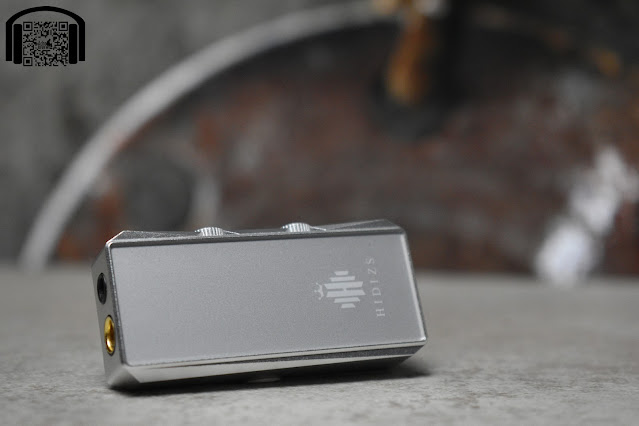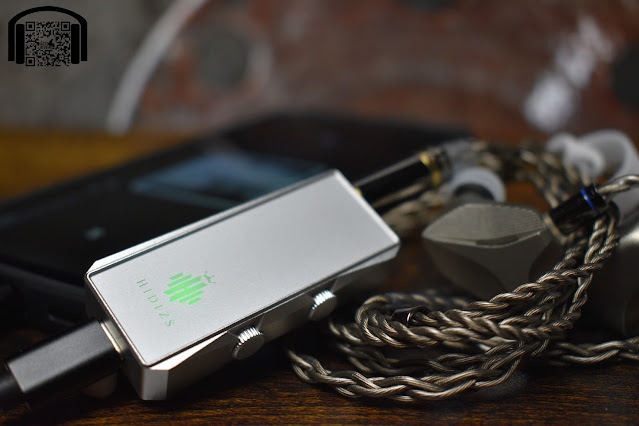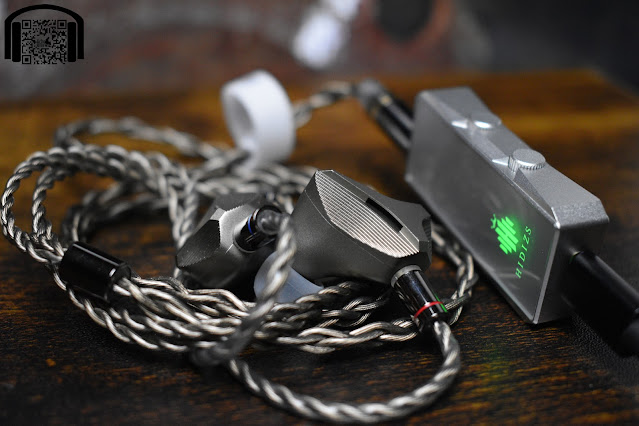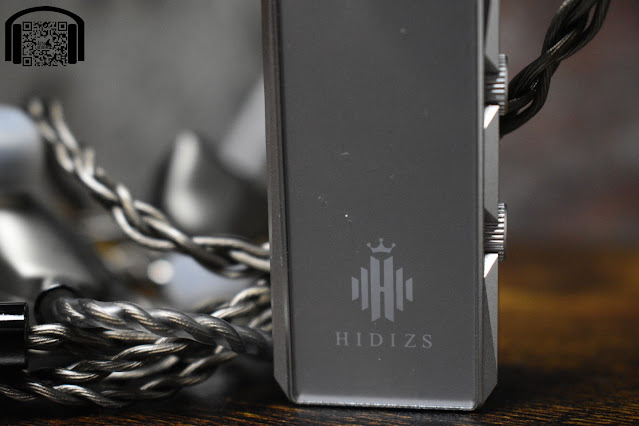TLDR version on YouTube: TDLR - Hidizs Pro Plus Martha
The S9 Pro Plus Martha has been sent to me directly by Hidizs in exchange for the publication of this review. Hidizs have not made any specific requests or comments and I will do my best, as always, to be a unbiased and sincere as possible.
You can find the official page for the Hidizs S9 Pro Plus here: Hidizs S9 Pro Plus Martha - HiFi Balanced Dongle DAC
As with all of the links I share, this is a non affiliate link.
Intro…
I reviewed the S9 Pro dongle DAC quite some time ago, 2 years ago in fact, although the dongle was launched quite a bit before that. I remember the device being very powerful for its size, and in comparison to the competition at the time, with a sound signature that was quite cold and analytical.
I think that the S9 Pro was something that worked rather well for Hidizs, making the brand known to quite a few people, especially because, at the time, there were nowhere near as many dongle options as there are now. The S9 Pro used an ESS ES9038Q2M chip and the device was specified as putting out 200mW @32 Ohms from it’s 2.5mm balanced socket and 100mW from its single ended socket. Again, quite an achievement at the time. However, what was even more of an achievement was the fact that it measured under testing even better than it did in their specs.
So, moving on over 2, almost 3, years since its release, Hidizs now bring us the S9 Pro Plus Martha, a device that is very reminiscent of the Pro but with some updates that Hidizs are quite excited about.
The DAC chip does remain the same on the new version but there have been changes to the implementation that we will discuss throughout the review. One thing to note from the new specs is that output power is actually shown differently, promising 100mW + 100mW from its SE output (@ 32 Ohms) and 180mW + 180mW from its BAL output (again at 32 Ohms).
I don’t have the equipment to confirm or deny the claims (you can check out hiendportable.com for measurements) but based on the previous device and my time using the S9 Pro Plus, I have absolutely no reason to not believe that it meets at least the specs quoted. That is still a lot of power from a dongle device, even years after the S9 Pro was released.
But anyway, let’s take a look in more detail and see what else, other than power, the S9 Pro Plus has to offer.
Presentation…
The packaging is a small square, hard plastic, black box. This is surrounded by a cardboard cover that shows the device on the front, along with specifications on the back.
Removing the lift off cover from the box, we find the S9 Pro Plus sitting inside a foam cutout that protects it. Underneath this top layer of foam, there is a small cardboard compartment that contains the USB-C to USB-C cable, a USB-A to USB-C adapter, a card with the serial number etc. and a couple of small, square, hi-res stickers (that I am sure will make some people happy as they are in the box and not on the device ![]() ).
).
That is about it as far as presentation. There is no instruction manual included but I am not sure if it will be included in the retail version. To be honest, in my case, the manual would have been obsolete anyway as, when I first received the device, the buttons only served to change track. A later firmware update added functionality.
Build and aesthetics…
While the build of the S9 Pro Plus still features the machined aluminum and the glass of the previous version, there have been quite a few updates to the layout and aesthetics of the device.
The new model is slightly shorter, yet also slightly wider and thicker. The differences aren’t huge only 4 or 5mm or so, and I don’t have the original on hand to compare, but it gives me a feeling of being more compact.
One of the main additions to the Pro Plus are the two buttons on the side. These look like rotary dials but are in fact push buttons. The buttons are plastic and do have a bit of a wobble to them but nothing terrible.
The device is available in various colours (black, blue and silver) and features an illuminated Hidizs logo on one side that changes colour depending on the format of the track being played. In general, the aesthetics are not anything spectacular but they still look decent and I have no issues to point out with them.
Functionality…
While the S9 Pro was just a plug and play device, the Martha does add some extra functionality to the device. It still decodes PCM up to 32bit/768kHz and Native DSD up to 512, with no MQA support, if that is something that interests you.
The changes come by means of having 7 different filter options to choose from, at least according to the publicity, as the instructions and the actual device only have 6. These can be cycled through by pressing both of the buttons simultaneously. I honestly can’t say that I notice much difference between the filters in a sighted test, so there is no way I would pick them out in a blind test, but they are there for those of you that have better hearing capabilities than me ![]()
When I first received the S9 Pro Plus, the main function of the buttons was to change tracks. I reached out to Hidizs (as did a few other people I think) and asked if there was any intention to implement volume control from the buttons. Hidizs took this into account and a couple of weeks later released a firmware upgrade that converted the buttons to control volume rather than tracks.
For use with a phone, I believe that there will be people who prefer one or the other based on personal preference, however, for use with a PC, which is how I have mostly been using the device, I much prefer the volume control. There is no sustained volume change, in other words, you need to click the button step by step, which are 2 point increases (or reductions) in Windows, but pressing and holding the button does not perform any action.
One thing to note is that the volume control on the S9 Pro Plus does not work with the Tidal app on Android. I have spoken with Hidizs about this and it seems it is due to the way the Tidal app works, not allowing an external device to control volume. The Tidal app also causes issues with volume control of other apps when Tidal has been opened with the dongle attached, when closing Tidal, the volume control does not work in other apps until the device is disconnected and reconnected.
I am not an engineer, or programmer, so I cannot say what the technical reason is for this but I will say that I have found the Tidal app to cause issues with many devices in the past, some of them frequent and others very random. The common factor in all of them was the Tidal app. Therefore, I have no doubt that it is an issue with Tidal but I just wanted to mention it.
Sound…
Hidizs say in their publicity that the S9 Pro Plus has a different tuning to the S9 Pro. While this is not exactly true, as both devices have a flat frequency response, there is a perceived difference in the actual sound.
With the S9 Pro I found that things could come across as rather bright and harsh, although very detailed. In the case of the S9 Pro Plus, the sound seems to not present these characteristics. It is not a warm sound, it is still very neutral, but it is not overly analytical like I found the S9 Pro to be.
Maybe analytical is the wrong word as this dongle is still very detailed, in fact, it is just as detailed as I remember the previous model being, it is just not as sharp as that model. I would say that the overall sound is neutral to the point of not leaning one way or another.
I have been using it to power quite a few IEMs, from budget offerings such as the Salnotes Zero, up to high end models such as the Aroma FEI WAN, and it has done a good job of driving all of them. I didn’t find that it caused anything in particular to stand out in comparison to other neutral sources that I have used, making it transparent and, well, neutral to my ears.
With headphones, it also does a fairly decent job with most of the dynamic drivers I have on hand. Even with the easier to drive planars, such as the Ananda, I find it to work pretty well, although some of the more demanding planars, such as the Arya v2, did seem to be a little lacking in performance. This is to be expected, especially when listening to fast paced music with larger quantities of bass.
I have got into the habit of trying the Koss KPH40 on many of the sources I review as they do react quite differently on different sources (the famous “scaling” is quite impressive for a set of 40€ headphones). The S9 Pro Plus doesn’t get excessively loud with them (60 ohms & 101dB is not really an easy load for the dongle) but they do sound clean and musical at my usual listening levels.
Conclusion…
The S9 Pro Plus has arrived a few years after the S9 Pro and I think it is a worthy upgrade to the previous model. The S9 Pro was (is) a very good dongle but, in my opinion, it was just a little harsh in its presentation.
The S9 Pro Plus has taken that presentation and smoothed it slightly, without losing the qualities that the S9 Pro was known for. Yes, the DAC chip stays the same but that is not necessarily a bad thing. As I have said before, it is more about the implementation than the chip itself, the newest isn’t necessarily the best.
What we do get is volume control, 6 filters to choose from and a 4.4mm output to replace the 2.5mm. All of these are improvements, while the price stays basically the same as the old model.
Speaking of price, I haven’t mentioned it yet!
Depending on when you see this review, the price is going to vary but the Pre-order starts on November 16th and runs until November 30th. During this time, the first 100 units will be priced at $69.99 and then, after the first 100 units are sold, it will cost $79.99.
As I said, this price I find reasonable as the S9 Pro is still around 80€ here at the time of putting this review together.
Also, Hidizs have offered a 5% discount to anyone who reads this review, using the Code: ACHO5OFF
As always, I have no affiliation with Hidizs nor do I use any affiliate links, so I do not receive anything in exchange for any purchases made with or without the code, but I guess it does give Hidizs a way of tracking anyone who purchases after reading my review.
As always, this review is also available in Spanish both on my blog (www.achoreviews.com) and on YouTube (www.youtube.com/achoreviews)






